Now Reading: Top 10 Best Places to Visit in Nakhon Ratchasima – Temples, Nature & Culture
-
01
Top 10 Best Places to Visit in Nakhon Ratchasima – Temples, Nature & Culture
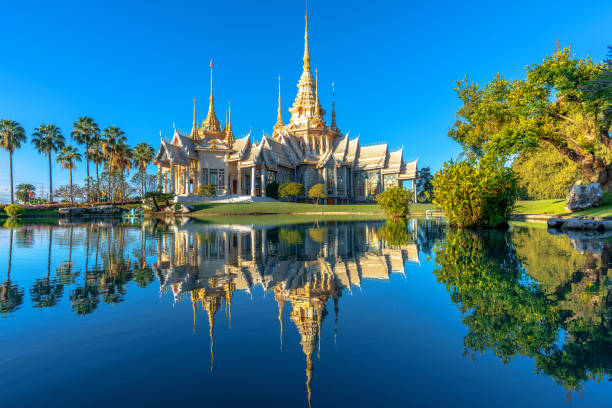
Top 10 Best Places to Visit in Nakhon Ratchasima – Temples, Nature & Culture
1.Maha Viravong National Museum

Surrounded by peaceful grounds, the Maha Viravong National Museum at Wat Suttha Chinda in Nakhon Ratchasima (Korat) gives visitors a fascinating glimpse into Thailand’s past. The size may be small, but the museum displays many artifacts that capture the country’s different periods and types of art.
Historical Background
The museum was founded in 1954 and was named for Somdej Phra Maha Viravong (Oun Tisso), a respected monk who previously led Wat Suttha Chinda. Somdej Phra Maha Viravong was an eager collector and researcher, so in 1927 he presented the Fine Arts Department with his large collection of artifacts. Her generous gift made it possible to build the museum dedicated to keeping and showing off Thailand’s cultural heritage.
- Address: 750 Rajadamnern Road, Nai Mueang Sub-district, Mueang Nakhon Ratchasima District, Nakhon Ratchasima 30000, Thailand
- Mondays and Tuesdays are closed; the museum is open every day from Wednesday to Sunday, 9:00 AM – 4:00 PM
- Ticket price for Thais is 10 Baht and for foreigners it is 50 Baht.
2. Khao Yai National Park

On September 18, 1962, Khao Yai National Park became the very first national park in Thailand. Dedicating 2,168 square kilometers to conservation in Nakhon Ratchasima, Prachinburi, Saraburi and Nakhon Nayok, the park is a major part of Thailand’s conservation and has held the title of a UNESCO World Heritage Site since 2005.
Historical Background
Before it became Khao Yai, the area was a remote settlement established in the 1920s. Since it was so remote, it allowed fugitives to hide, so in 1932 the government decided to move its residents. Because Boonsong Lekakul understood the area’s ecological importance, the park was established as an actual National Park by the government in 1962.
Visitor Information
- You can find Chiang Mai about 3 hours to the northeast of Bangkok.
- Visitors should plan for November to February, since the weather is cool and relatively dry.
- People aged 12 and over must pay 300 Baht, while children will be charged 150 Baht.
3.Wat Phra Narai Maharat

At the heart of Nakhon Ratchasima (also known as Korat), Wat Phra Narai Maharat maintains a record of Thailand’s religious and cultural background. This lovely Theravada Buddhist temple, bordered by a peaceful pond, includes ancient Hindu features which highlights the mix of faiths found around here.
Historical Background
The temple was built in the 17th century, at the time of King Narai the Great of Ayutthaya. Because of the region’s importance, King Narai had a city built and Wat Phra Narai Maharat became its key religious site.
From what archaeologists have uncovered, this property was where a Khmer temple dedicated to Vishnu (Phra Narai in Thai) once stood. For example, sandstone statues and parts of Khmer-era buildings have been found all over the country.
Historic qualities in architecture and culture
- Ordination Hall (Ubosot) lies on a small island, connected to the rest of the temple by a red bridge and contains a very large statue of the Buddha seated in meditation. The area follows the traditional Thai style, featuring gabled roofs and many wooden details.
- A short way from the main hall is the Naranya Shrine, where you can see four Khmer-style Hindu deities: Vishnu (Phra Narai), Brahma (Phra Phrom), Shiva (Phra Isuan) and Ganesha. They are only a small height, less than half a meter and their outlines are faded, adding to their age and great respect as religious art.
- The place is found at the intersection of Prajak Road and Assadang Road, Nakhon Ratchasima
- You can visit from 08:00 in the morning to 17:00 every day
- Admission: Free
4. Night Ban Koh

Located in the middle of Nakhon Ratchasima, Night Ban Koh (NBK) is a busy night market that truly reveals the local way of life. After the sun goes down, the area is packed with motorbikes, showing that it’s time to enjoy shopping, dining and being together.
Cultural Significance
You can do more than shop and dine in the area, as Night Ban Koh attracts diverse cultures as well. Young people in Korat often meet here, showing what their generation is like these days. The energetic atmosphere at the market which features live music and many people, allows you to look into what the community is like.
Operating Hours
The market becomes very busy in the evening and stays lively late into the night, so it’s the perfect choice for anyone who enjoys nightlife.
5. Korat Zoo Lagoon and Water Park

On the sprawling grounds of Nakhon Ratchasima Zoo sits the Korat Zoo Lagoon and Water Park which combines time with animals and fun in the water. Families looking for education and entertainment have plenty of fun at this water park.
Historical Background
The zoo opened to the public on 14 December 1996, two years after the government of Thailand founded it on 23 May 1989. Taking direction from the Zoological Park Organization of Thailand, the zoo is built on 218 acres and tries to imitate the savanna grasslands to give animals similar habitats to those in the wild.
Bringing in the Lagoon and Water Park was an important move to improve guest experience as Thailand gets hotter. Creating opportunities to learn and play in the zoo\’\’s supports its work in conservation and family-friendly amusement.
Importance and Things to Do
- Almost anyone can enjoy the water park, particularly due to the lazy river, huge slides and splash areas. Visitors can find these helpful amenities after a walk through the zoo’s many animal exhibits.
- Combining learning about wildlife with entertaining events provides a unique kind of education in the park. Animal lovers will spot lions, elephants and giraffes in areas set up like their natural habitats and they can relax later in the water park .
- Located about 20 km from the center of Nakhon Ratchasima, the park can be reached on Highway No. 304. Since it costs very little to play, everyone from the city and visiting tourists can take part.
📍 For information on visiting, click Here
111 Moo 1, Ratchasima-Pak Thong Chai Road, Chai Mongkhon, Mueang Nakhon Ratchasima, Nakhon Ratchasima 30000
- Operating Hours:
- Each day, the zoo is open from 8:00 AM until 5:00 PM.
- From 09:00 AM to 05:00 PM each day, the Water Park is open.
- Admission Fees:
- Admission for adults is 80 baht and for children 20 baht.
- Water Park: Adult price is 20 Baht and children pay 5 Baht.
6.Rafting at Lam Takhong

Located in Nakhon Ratchasima’s beautiful scenery, the Lam Takhong River gives families and new adventurers a peaceful chance to experience rafting. With its calm water winding through orchards, forests and farmland, this river is perfect for people who want an easy but enjoyable outdoor experience.
- Historical Background
- The region’s agriculture and ecosystem have largely relied on the Lam Takhong River for a long time. In 1974, when the Lam Takhong Dam was built, the river started to provide irrigation and hydroelectric power to nearby societies and businesses. It helps control water levels and – because of the reservoir’s attractiveness – is often used for recreational activities such as rafting.
What Makes It Significant and Why It’s Popular
- At a difficulty of grade 1–2, the river offers great experiences for those just starting and for families. It takes about 1.5 to 2 hours to raft for 5 kilometers.
- Rafters can float through areas of lush orchards, dense woods and lovely farmlands, taking in the area’s beautiful scenery.
- May to September is the top time to go rafting, since the river reaches its height and provides the best rafting experience.
- Elephant rides on offer near the area give visitors an unforgettable cultural experience.
- The rafting will be in Nakhon Ratchasima Province, 62 kilometers from the city center, near the Lam Takhong Dam.
7. Prasat Phanom Wan

Prasat Phanom Wan is a Khmer temple that is important yet not well known, found about 15 kilometers northeast of Nakhon Ratchasima (Korat) in the northeast of Thailand. The area’s transformation from Hinduism to Buddhism over many centuries is made clear by this site and its structures.
Historical Overview
King Udayadityavarman II built Prasat Phanom Wan in the 11th century and it was originally a Hindu temple dedicated to Shiva. During King Jayavarman VII’s rule in the 13th century, the temple was changed by adding pink sandstone features and a colonnade based on the architectural style of that time. Eventually, during the Ayutthaya period, the temple was made into a Buddhist site, as is shown by the presence of Buddha images and texts in the complex.
Architectural Features
The sanctuary is surrounded by a wall made from laterite and it has four gopuruas (entrance towers) placed at each cardinal direction. Arranged eastward, the prang (tower) is linked to a tiered stupa through a stone walkway. There is another small sandstone tower to the southwest called “Prang Noi” that protects a large statue of Buddha. Located around the temple are remains of a baray (moat) and an earth mound named Noen Oraphim which mark its historical value and involvement in the local area’s water control and religious activities.
Visiting Information
- Ban Makha, Pho Tambon, Mueang District, Nakhon Ratchasima Province.
- Opening Hours: 07:00 in the morning to 18:00 in the evening every day.
- There is no cost to enter.
8. Khorat City Gates

In Thailand’s Khorat province (Nakhon Ratchasima), Chumphon Gate (Pratu Chumphon) is a well-known a landmark that has important historical significance. The Thonburi gate was built in 1656 during the time of King Narai the Great as one of several city walls to defend against the Khmer, Vietnamese and Laotians. Because of their work with the Ayutthaya Kingdom, French engineers planned the city into a rectangular shape which ended up being about 1,000 meters wide by 1,700 meters long .
Only the Chumphon Gate of the original four—Chumphon (west), Phon Saen (north), Phon Lan (east) and Chainarong (south)—has been preserved in its original form. The other three have been rebuilt from remainders of the originals. Chumphon Gate was made using large stones and bricks which are covered with plaster. The gate has a wooden look out known as a “ho rao” with a roof of tiles covered in traditional decorations. At the ends of the roof are two special pieces called “chofa” and “bai raka.”
Standing on the western edge of the old city’s wall, Chumphon Gate was important for gathering forces before joinngg battles . Because the Thao Suranari Monument is around the corner, it has historical significance linked to Lady Mo.
Many people believe Chumphon Gate has a magical attraction because of local folklore. Legend holds that if you pass through the gate once, you will always be welcome back to Korat; if you do so twice, you will find work or a place to call home; and if you go through it thrice, you will meet a local partner . They give the gate a place among local customs as well as an important historical landmark.
In recent times, Chumphon Gate has become very popular for people interested in Thai history and architecture. Because its layout has been conserved, it gives visitors a clear link to the city’s earlier history. During the evening, when the gate is lit up, it becomes extremely attractive for both looking at and taking pictures.
9. Petrified Wood Museum

The Museum of Petrified Wood, whose official name is Northeastern Museum of Petrified Wood and Mineral Resources, is found in Nakhon Ratchasima (Korat), Thailand. It was established in 1994 and officially opened in 2008 by Her Royal Highness Princess Maha Chakri Sirindhorn and is the region’s first museum of petrified wood as well as one of only eight similar museums in the world .
Geological Significance
The museum hosts more than 10,000 specimens of petrified wood which span an age range from 1 million to 70 million years. These specimens which were found in Chaloem Phra Kiat and Mueang districts, come in many different colors and sizes, including some that measure more than a meter in length. The area is famous for producing gemstone-grade petrified wood such as opal, carnelian, agate and jasper and Thailand’s largest opalized log was unearthed in Suranaree Sub-district.
- The place is on Mu 7 of the main Ban Krok Duean Ha bus route, next to Mittraphap – Nong Pling Road in Tambon Suranari, Nakhon Ratchasima.
- Opening Hours: Every day except for Monday, 09:00 – 16:00.
- You need to pay 50 Baht as admission fee if you are an adult, 30 Baht if you are a university student, 20 Baht if you are a student from high school or lower level and 120 Baht if you’re a foreigner.
10. Wat Ban Rai

Wat Ban Rai (วัดบ้านไร่), popularly called the “Elephant Temple,” beautifully mixes respect for Buddhism and newly created artwork, found in the Dan Khun Thot district of Nakhon Ratchasima province, Thailand. The temple was built because of Luang Phor Khun Parisuttho, who turned a humble monastery into a place where spirituality and art flourish.
Architectural Marvel
Built in 2013, the Kapong temple’s highlight is the Hor Thep Wittayakom, a huge image of an elephant emerging from a turtle’s form which stands for strength and longevity. More than 20 million pieces of colorful ceramic mosaic adorn this building which makes it Asia’s biggest ceramic mosaic shrine. Visitors enter the temple by crossing a bridge watchfully guarded by the statues of seven-headed Nagas .
Cultural Significance
The site is important to many people as it allows them to pay honor to Luang Phor Khun, who helped the area by building schools, hospitals and roads. Great crowds of visitors continue to be inspired by what he accomplished and a museum in the temple complex celebrates his life .
- Kut Phiman is found in the Dan Khun Thot District of Nakhon Ratchasima Province, Thailand
- The Store Opens at 7:00 AM and Closes at 5:00 PM Every Day
- It is free to get into the Museum and donations are always appreciated.
Related articles : Top 10 Best Places to Visit in Nakhon Sawan – Temples, Nature & Culture
Stay Informed With the Latest & Most Important News
Previous Post
Next Post
-
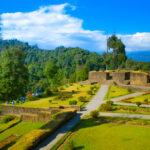 01Top 5 Best Places Visiting in Gyalshing – Monasteries, Lakes & Scenic Escapes
01Top 5 Best Places Visiting in Gyalshing – Monasteries, Lakes & Scenic Escapes -
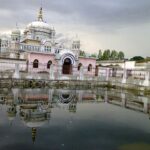 02Top 5 Best Places Visiting in Panna – Temples, Waterfalls & Wildlife Escapes
02Top 5 Best Places Visiting in Panna – Temples, Waterfalls & Wildlife Escapes -
 03Top 5 Best Places to Visit in Malerkotla – Malerkotla Fort, Sheesh Mahal & More
03Top 5 Best Places to Visit in Malerkotla – Malerkotla Fort, Sheesh Mahal & More -
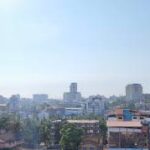 04Top 10 Best Places Visiting in Dakshina Kannad for Culture, Nature & Coastal Charm
04Top 10 Best Places Visiting in Dakshina Kannad for Culture, Nature & Coastal Charm -
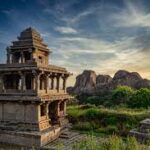 05Top 2 Best Places Visiting in Chitradurga for History, Nature & Adventure
05Top 2 Best Places Visiting in Chitradurga for History, Nature & Adventure -
 06Best Places Visiting in Shopian – Explore Top Attractions & Hidden Gems
06Best Places Visiting in Shopian – Explore Top Attractions & Hidden Gems -
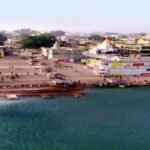 07Best Places Visiting in Narmadapuram – Temples, Waterfalls & Wildlife Escapes
07Best Places Visiting in Narmadapuram – Temples, Waterfalls & Wildlife Escapes












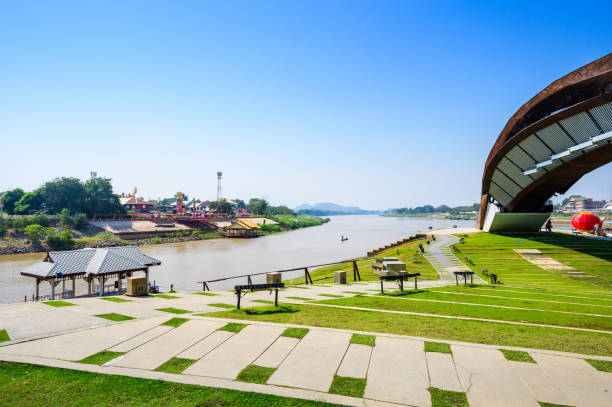

Pingback: Best Places to Visit in Nakhon Phanom – Explore Temples, Culture & Nature